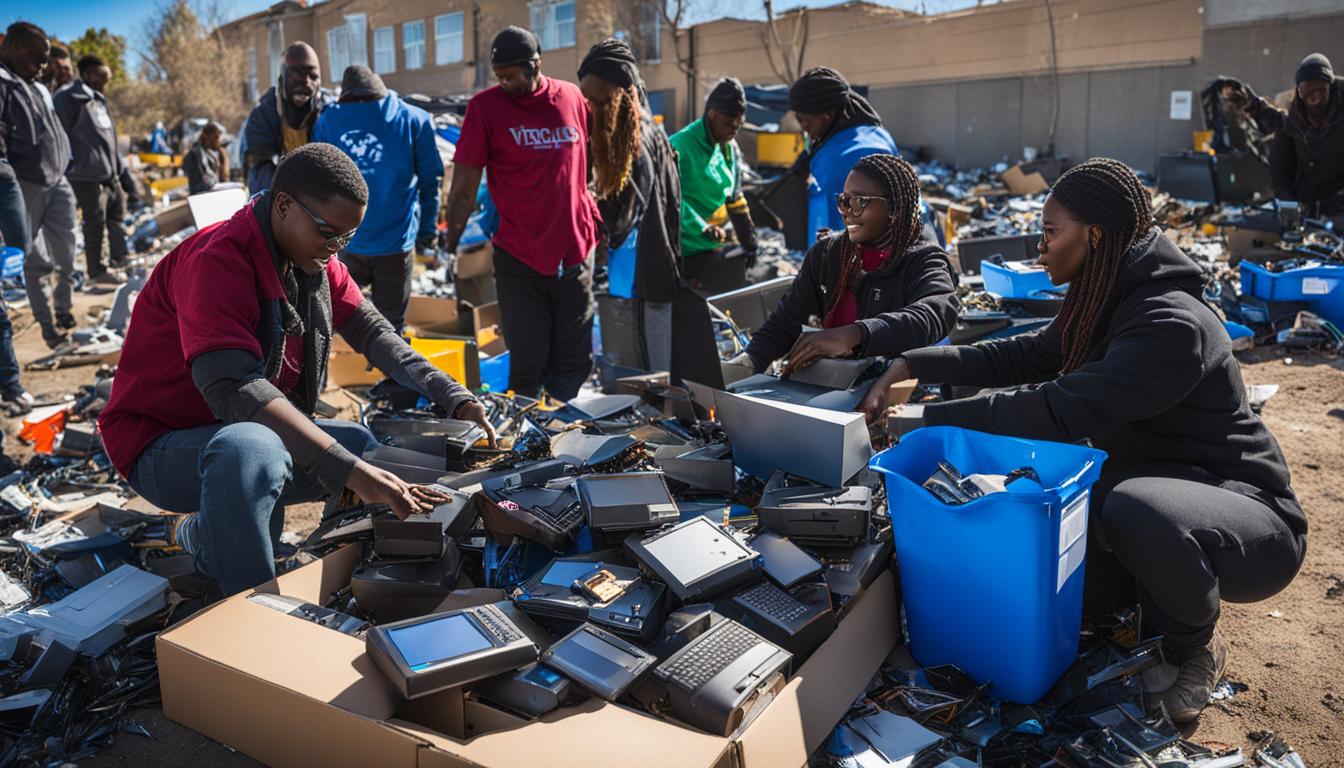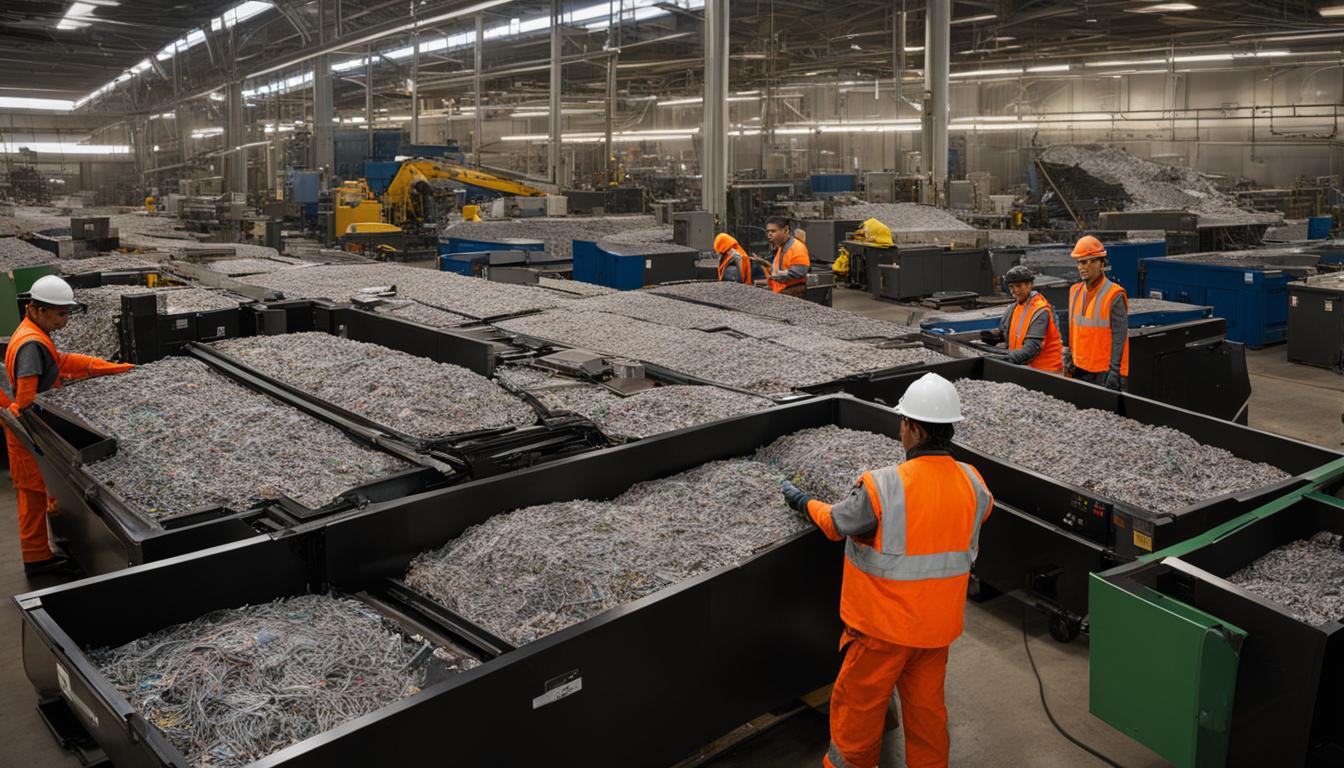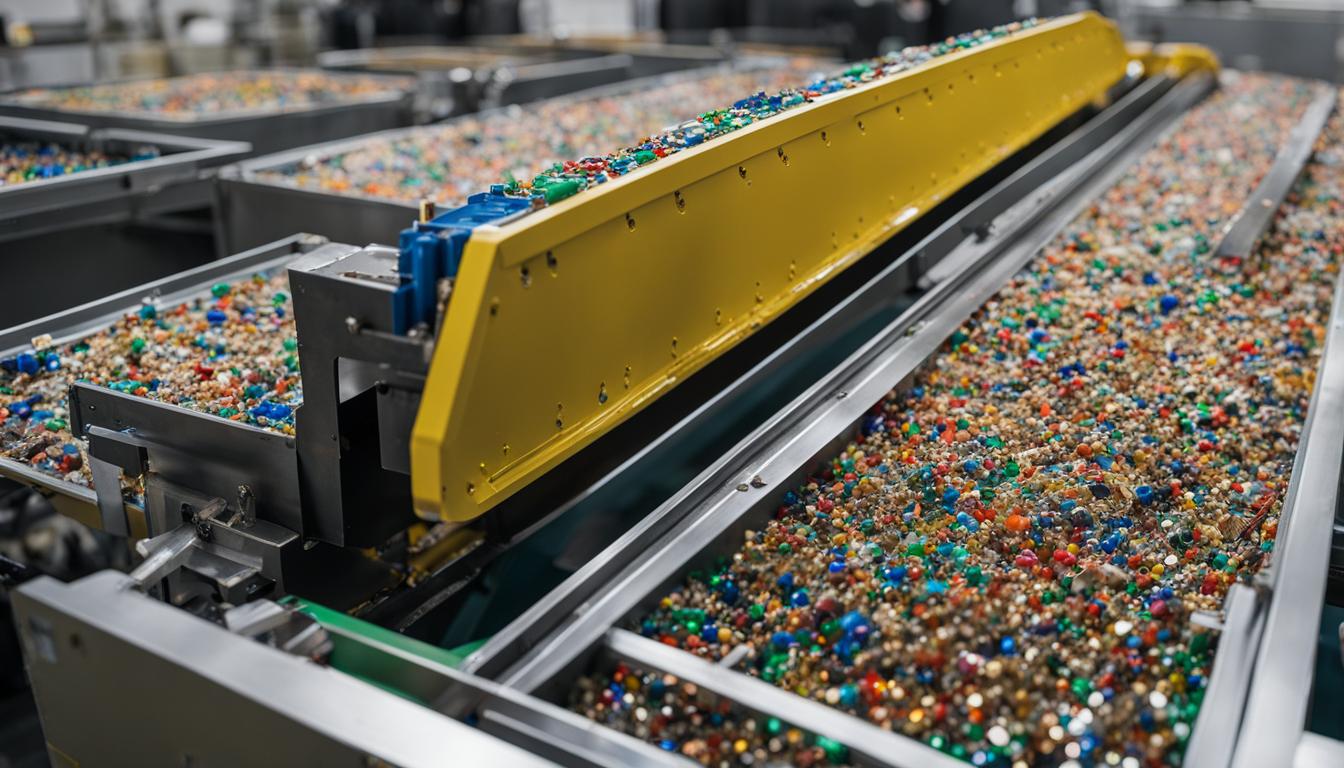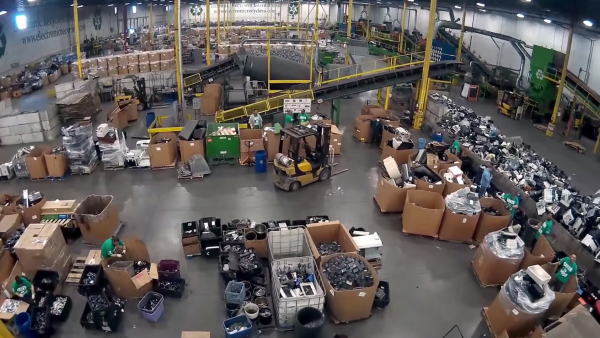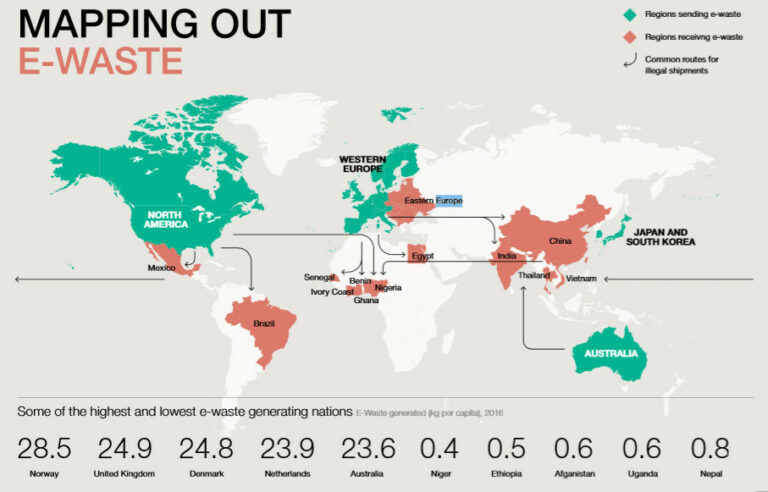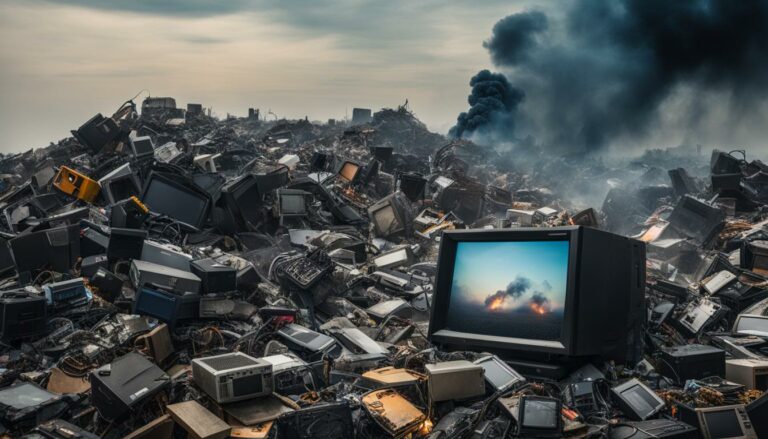Network Recycling Best Practices for Enterprises
Recycling is an important practice for businesses as it reduces waste sent to landfills and conserves raw materials. When it comes to IT asset disposal, enterprises should prioritize sustainable solutions. By implementing network recycling best practices, businesses can contribute to a greener future while maintaining efficient operations.
Key Takeaways
- Enterprise network recycling is crucial for reducing waste and preserving resources.
- Proper IT asset disposal ensures environmental sustainability and legal compliance.
- Sustainable IT solutions offer economic benefits and contribute to a positive company culture.
- Choosing certified recyclers and implementing secure data wiping are essential for data security.
- IT recycling creates job opportunities and promotes social development.
The Importance of IT Recycling
IT recycling plays a crucial role in environmental conservation by preventing electronic waste from ending up in landfills and releasing harmful substances into the environment. In addition to the environmental impact, proper IT recycling practices also ensure data security and legal compliance.
From an environmental perspective, IT equipment contains hazardous materials such as lead, mercury, and cadmium that can contaminate soil and water if not disposed of properly. By recycling IT equipment, these harmful substances can be safely extracted and disposed of, reducing the risk of pollution and protecting ecosystems. Furthermore, recycling IT equipment reduces the need for raw materials extraction and energy-intensive manufacturing processes, contributing to the overall conservation of resources.
In terms of data security, simply discarding old IT equipment without properly wiping sensitive information leaves businesses vulnerable to data breaches and potential legal consequences. IT recycling involves securely wiping data from hard drives and other storage devices, ensuring that confidential information remains confidential. Engaging with certified IT recyclers who follow industry standards for data destruction provides added assurance that sensitive data is handled appropriately.
Proper IT recycling practices help businesses comply with legal requirements and avoid fines and legal action.
Moreover, IT recycling is not only good for the environment and data security but also for legal compliance. Many countries and regions have regulations in place that require businesses to properly dispose of electronic waste and adhere to specific recycling practices. By engaging with reputable IT recyclers, businesses can ensure that they are compliant with these regulations, avoiding potential fines and legal action.
| Benefits of IT Recycling | Environmental Impact | Data Security | Legal Compliance |
|---|---|---|---|
| Prevents electronic waste from ending up in landfills and releasing harmful substances into the environment | Ensures secure wiping of sensitive information from old IT equipment | Helps businesses comply with regulations and avoid fines | |
| Reduces the need for raw materials extraction and energy-intensive manufacturing processes | Protects businesses from data breaches and potential legal consequences |
Types of IT Equipment that Can Be Recycled
When it comes to IT equipment recycling, a wide range of devices can be repurposed or recycled to reduce environmental impact and promote resource conservation. From computers and laptops to servers and networking equipment, businesses have the opportunity to responsibly dispose of these items and contribute to a more sustainable future.
Computers and laptops, which are integral to modern-day operations, contain various components that can be refurbished or recycled. By recycling these devices, valuable materials such as metals and plastics can be recovered, reducing the need for extracting and manufacturing new resources.
In addition to personal computing devices, servers and networking equipment also play essential roles in managing and maintaining business networks. These devices often contain valuable components and metals that can be repurposed or recycled, presenting a valuable opportunity for businesses to contribute to a circular economy.
Furthermore, it’s not just traditional office devices that can be recycled. Printers, scanners, and even mobile devices like smartphones and tablets can also be recycled, ensuring that their valuable materials are recovered and reducing the amount of e-waste that ends up in landfills.
Table: Examples of IT Equipment that Can Be Recycled
| Device | Components | Recycling Potential |
|---|---|---|
| Computers | Processors, memory modules, hard drives, motherboards, power supplies | High |
| Laptops | Keyboards, screens, batteries, circuit boards | High |
| Servers | Processor units, memory modules, hard drives, power supplies | High |
| Networking Equipment | Routers, switches, network cards | High |
| Printers | Toner cartridges, circuit boards, motors, plastics | Medium |
| Scanners | Optical sensors, circuit boards, plastics | Medium |
| Mobile Devices | Batteries, screens, circuit boards, plastics | Medium |
“Recycling IT equipment not only conserves resources and reduces waste but also presents a valuable opportunity for businesses to contribute to a circular economy and promote sustainability.” – IT Recycling Expert
By recycling various types of IT equipment, businesses can make a significant impact in reducing e-waste and conserving resources. It is crucial for enterprises to consider responsible disposal options and ensure that these devices are recycled in a secure and environmentally friendly manner.
Best Practices for IT Recycling Solutions
When it comes to IT recycling, implementing best practices is crucial to ensure data security and environmental sustainability. Here are some key practices to consider:
Data Wiping
Proper data wiping is essential before recycling IT equipment. This process ensures that sensitive information is securely removed from devices, preventing any potential data breaches. It is important to use reliable software or engage certified professionals to perform data wiping to safeguard your company’s data.
Certified Recycler
Choosing a certified recycler is vital to ensure that IT equipment is recycled responsibly and in compliance with industry standards. Look for recyclers that hold certifications such as ISO 14001 for environmental management and ISO 27001 for information security management. Working with a certified recycler gives you peace of mind knowing that your IT assets will be processed ethically and sustainably.
Secure Transportation
During the recycling process, the transportation of IT equipment must be done securely to prevent any potential data breaches or theft. Use trusted logistics providers that have the necessary security measures in place, such as tamper-proof packaging, GPS tracking, and secure storage facilities. This ensures that your equipment is protected while in transit and reaches the recycling facility safely.
By following these best practices for IT recycling solutions, businesses can mitigate data security risks, comply with regulations, and contribute to a greener future.

Table: Benefits of Best IT Recycling Practices
| Benefits | Description |
|---|---|
| Eco-friendly | Reduces e-waste and conserves resources |
| Data Security | Prevents potential data breaches and theft |
| Compliance | Ensures adherence to legal and regulatory requirements |
| Cost Savings | Refurbishing and reselling IT assets instead of purchasing new equipment |
Implementing these best practices not only minimizes environmental impact but also helps businesses maintain data security and meet legal obligations. By prioritizing IT recycling solutions, companies can make a positive impact on both their bottom line and the planet.
Benefits of IT Recycling
IT recycling offers a wide range of benefits, encompassing environmental, economic, and social advantages. By adopting sustainable practices in disposing of IT equipment, businesses can actively contribute to a greener future.
From an environmental perspective, IT recycling helps reduce e-waste and minimize the negative impact on natural resources. By recycling electronic devices such as computers, laptops, servers, and networking equipment, valuable components can be recovered and reused, conserving precious raw materials. This process not only extends the lifecycle of IT equipment but also reduces the need for new manufacturing, resulting in a smaller carbon footprint.
Furthermore, engaging in IT recycling can yield significant economic benefits for businesses. Instead of purchasing new equipment, refurbishing and reselling IT assets can lead to substantial cost savings. This approach not only reduces expenditure but also promotes a more sustainable and cost-conscious business model. Additionally, IT recycling creates job opportunities within the recycling industry, contributing to local economic growth and social development.
Lastly, IT recycling offers social benefits by promoting education and awareness around sustainability. By actively participating in recycling initiatives, businesses can set an example for their employees and stakeholders, inspiring them to adopt environmentally responsible practices. This can foster a positive company culture and enhance the brand’s reputation as a socially conscious organization.
| Environmental Benefits | Economic Benefits | Social Benefits |
|---|---|---|
|
|
|
Conclusion
Implementing enterprise network recycling and adopting IT recycling solutions in businesses not only promotes environmental sustainability but also ensures data security and offers economic benefits. By recycling IT equipment and following best practices, businesses can reduce waste, conserve resources, cut costs, and contribute to a positive company culture. IT recycling is a crucial practice in today’s technological landscape, and its benefits are far-reaching for enterprises, the environment, and society as a whole.
FAQ
What is the importance of recycling IT equipment?
Recycling IT equipment is important as it helps reduce e-waste, conserve resources, and protect the environment. It also ensures data security by securely wiping sensitive information from old IT equipment.
What types of IT equipment can be recycled?
Various types of IT equipment can be recycled, including computers, laptops, servers, networking equipment, printers, scanners, smartphones, and tablets.
What are the best practices for IT recycling solutions?
Best practices for IT recycling solutions include proper data wiping to ensure the secure removal of sensitive information, choosing a certified recycler that follows industry standards for environmental sustainability and data security, and using secure transportation methods.
What are the benefits of IT recycling?
IT recycling offers benefits such as reducing e-waste and conserving resources, leading to cost savings by refurbishing and reselling IT assets, creating job opportunities, and contributing to social development and sustainability.



